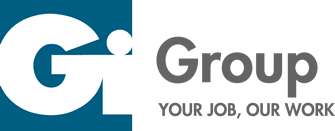
If you have decided to have your team work remotely until you see the consequences of the corona-virus epidemic, consider making it possible to manage and distribute responsibility laterally.
Working remotely means distributing information and responsibilities differently
Lateral management promotes horizontal interaction between the team members themselves, in which the leader is the activity coordinator, not the one who primarily delegates tasks and gives feedback. This approach will give each team member a sense of responsibility for both the situation and the shared tasks, not just their individual responsibilities. Still, this mode is not easy to achieve right away, but it should strive for it as it integrates people.
Remote work needs to be structured
Effective remote work must have a daily structure and rhythm. People need to learn how to organize themselves and their family around these new daily protocols. Therefore, it is better to have a firmer work structure initially, until you have put your new virtual team ship on the right course. Identify forms of activity in the first week of work – the dynamics of video conferences of all team members, conversations and 1: 1 small group modes assigned to specific tasks. There is also a matter of defining a channel for feedback on whether tasks have been completed, with what quality and if they have not been completed, what is the proposal of the one who failed to complete the task first.
The most important thing is that people who work from home understand that working hours last while we are in our home and that during work hours interference must be avoided.
Tools for remote work
Here are some useful applications for efficient remote work:
- Zoom. Replacement for Skype because it achieved better picture and sound quality than the aforementioned standard application. It also allows screen sharing and recording of conversations, up to 500 people participating in a conference call. Gives 40 minutes free call-in free version. After this restriction, the appointment is rescheduled, and a new link is provided to continue the discussion.
- Slack – Chat application for real-time chat, in addition to topics that you start, you also have categories and specifications by the interviewee and so on; you can also send documents, photos and notes.
- Loom– a tool for taking a picture of yourself, that is a screen and yourself and sharing it all with others, either through cloud or online. It is handy when it comes to demonstrating how to work on something on your computer or to allow you to trace tasks and check the quality of work. The free version allows you 25 shots, and the tool seems to be free for the duration of the pandemic corona.
- Krisp is a background noise reduction application. Even if you are sitting in a crowded café during an online meeting, your colleagues will hear only you. The application is designed for freelancers who work using public facilities or means of transport.
- Doodle – instead of sending a bunch of emails to team members, send them a Doodle message and keep track of how they respond.
- Demio – a webinar and online lecture platform, with the ability to distribute excellent video and audio content. Real-time Q&A communication with the audience. The platform also offers audience segmentation.
- Jira– tool for project managers and project teams. Provides insight into project activity plan, level of execution, communication with all stakeholders, exchange of materials and comments.
- Infinity– more advanced version of Jira software. This is a platform that contains everything from one project to another, including documentation, assignments, charts, diagrams, event calendars etc.
- Trello – also a project application, looks like a sticker board, great for monitoring the process.
- Chimp or Champ– this app is designed to measure the happiness of team members you are not in physical contact with. It is very important to measure whether people are satisfied with the work, environment, work of other people and the interaction of unseen team members. The software is commercial and costs $ 99, but those who use it say it’s worth every dollar. The results of the survey are anonymous, one does not see who is dissatisfied, but one can see dissatisfaction. Or a degree of happiness in the team. The good thing is that along with measuring happiness, app also asks team members what would you change or improve.
- MyHours– firstly helps you to find how much time you spend on a project, and then to your client to see what you’ve done for him. When you enter the price of a working hour, it will calculate the values for each activity, which you can send to the client with invoicing. It will help you see how much you have effectively earned and how much you have lost.
- Tracking Remote– application for team members who understand their work from home a little more freely, because it monitors all activities of a remote team member and what sites he visits during working hours.
The worst scenario is to reduce everything to phone calls from remote team members.
Don’t forget your customers and key clients
In working remotely, you should not forget your clients and customers, integrate them into your plans and keep in regular contact with them. The opportunity for creativity is now more than ever before, at your fingertips.
Lastly, there are two good things in case you decide to try remote work.
Finally an opportunity to see what you’ve ignored in your development
The first one is that if you are unable to work full-time jobs that take up 80 percent of your work time, you now have the opportunity to devote yourself to those tasks that accounted for 20 percent of your attention and activity and finally get them done or closed. It is also an opportunity to reflect on innovation, process improvement, and business development.
Secondly, you can test how it can be done remotely and using virtual space and augmented reality. Universal digitization, redefinition of business models and new models of distance learning and work are what they say will be major features of the 4.0 Industrial Revolution.
The team is still the most important
While these universal preparations for the new age are ongoing, and while facing challenges with a force stronger than all of us, it is important not to miss the opportunity as a team to strengthen together and to trust with confidence in our personal and common forces both stressful and uncertain. The team has to be there to convey the main message – that we are not alone and helpless.
Of course, in such a situation it is necessary to keep open and clear communication about current events, changes and reorganization of business, a new hierarchy of goals.




